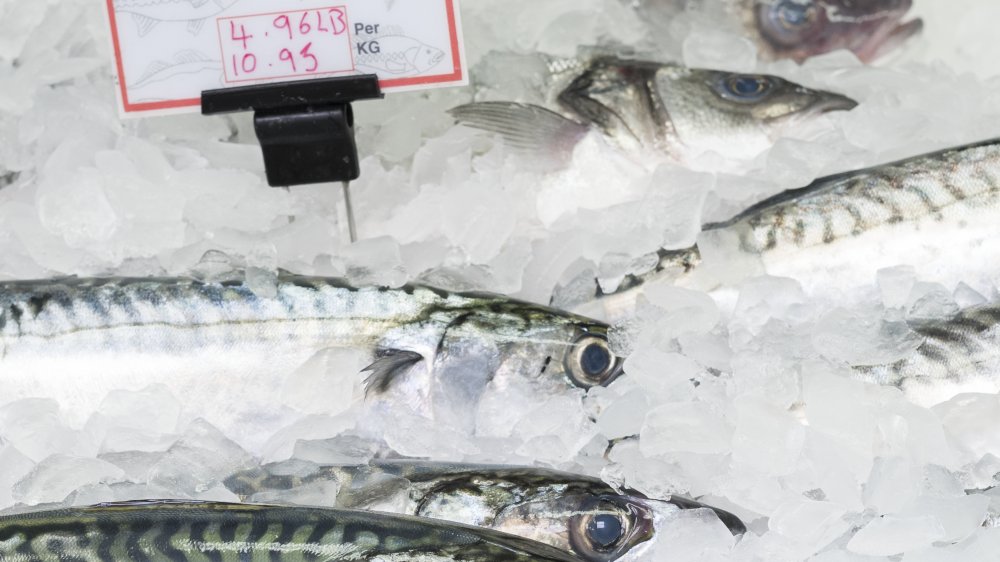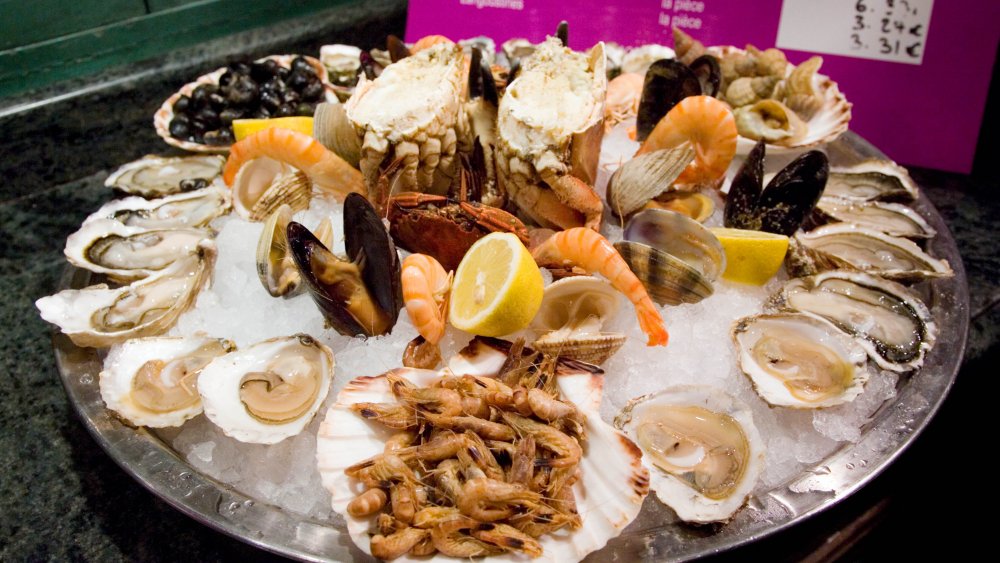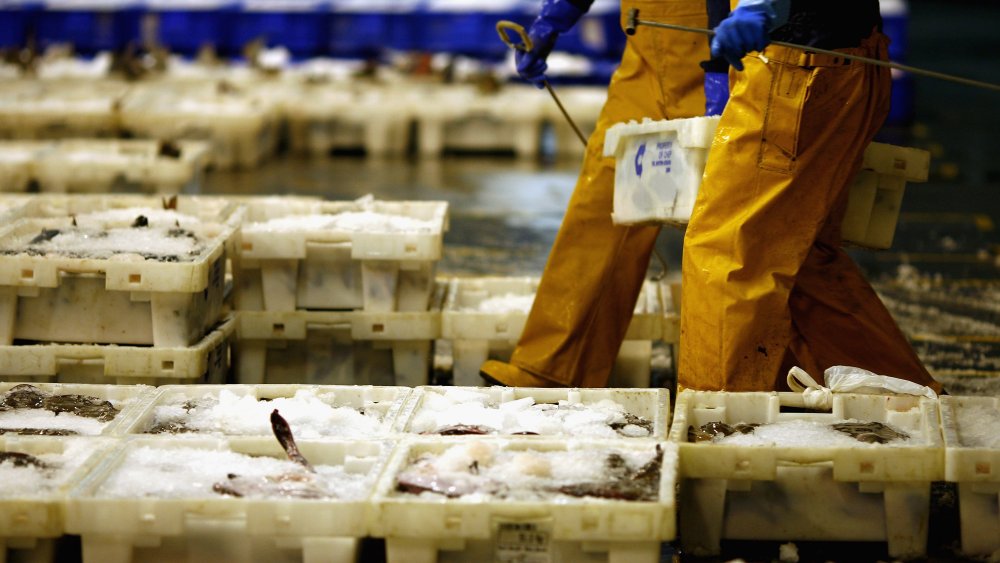How To Tell If Seafood Is Actually Fresh
Being able to tell the difference between fresh seafood and seafood that isn't worth consideration might sound like a daunting prospect, but it isn't as difficult as you might think.
Cooking experts at Taste of Home say all freshly-caught fish will have shiny metallic skin, and if you are buying a fillet, make sure its flesh has a vibrant color. Speaking of fillets, another way to find out if your fillet is fresh is to press down on the meat (don't forget to ask your fishmonger before you do this though); if your fingerprint disappears from the fillet and the flesh bounces back, you're good, but if the fingerprint remains, the fish may no longer be fresh.
If you're buying a whole fish, and after you've checked out its skin, take a closer look at its scales to make sure they are intact. These should feel connected to the body and feel firm. If you're holding the fish you're interested in, have a look at its gills to make sure they are bright red and moist. And while you're at it, look into your chosen fish's eyes, because they should be clear, and bulging. If your fish looks listless and dull, it probably isn't as fresh as it ought to be. If all else fails, trust your sense of smell. Fresh fish should have a mild scent and not smell, well, fishy (via Better Homes and Gardens).
The best places to get shellfish is to go to top seafood markets
The best way to find stellar shellfish including clams, mussels, and oysters, is to go to the best fish markets. You may not find any discounts here, but at least you'll know that the stock is fresh, because the turnover is high (via The Spruce Eats).
Clams and mussels are usually sold alive, so they should react to you, particularly if you tap on the shell; it should close (and tightly). Shellfish that were DOA (dead on arrival) won't open when they are being cooked so throw them away. If scallops are what you are after, don't expect to get them live as they are usually shucked. Look for "dry packed" scallops which are not stored in brine.
Meanwhile, if shrimp is on the menu, make sure you purchase them whole and frozen. Buying them whole means their shell protects the flesh from the freezing process.
Frozen seafood may be better than fresh
Because seafood can spoil quickly, most fresh catches need to be handled quickly and with care in order to keep stocks from getting spoiled. For instance, fish are normally kept in ice — not ice water — or they can be blast frozen and vacuum-packed aboard fishing boats. This would mean that frozen seafood, particularly if it is frozen aboard the boat immediately after it was caught, could well be of higher quality than "fresh" fish available at your supermarket counters.
Farm-raised fish will also be flash-frozen at the farm where it was raised. To buy the best frozen seafood, experts at The Spruce Eats suggests you get fish which has been vacuum sealed, or fish with a thick glaze of ice on it. Even if fish is frozen, you can tell that the process was well-timed if the fish's eyes stay clear and the color of its flesh stays vibrant. The best part about buying frozen fish is that it can cost about 20 percent less than its "fresh" counterpart, and you can't beat better quality at a more reasonable price.
Finally, location matters. Fresh fish in Kansas? It's possible. But best to enjoy the fresh fish a region is known for, such as Maine lobster.


